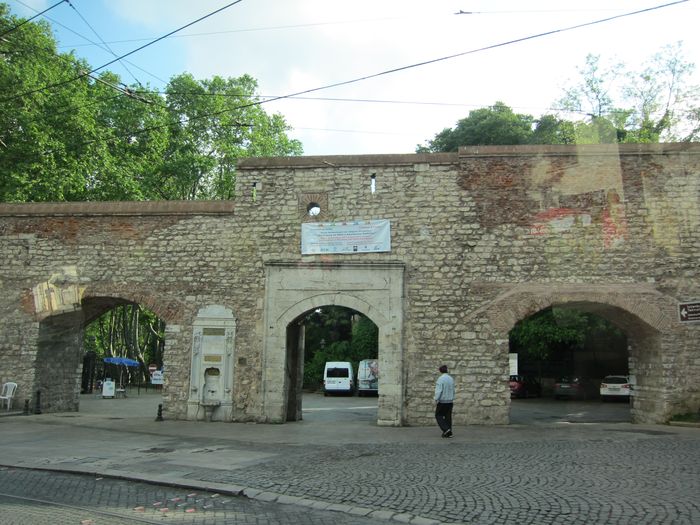Original proportions preserved
Zeugma Mosaic Museum has also taken away the title from Bardo Museum in Tunisia, as the largest mosaic museum in the world. The museum, which is spread out on three floors and a total of 30,000 m2 of indoor space, has nearly 7,075 m2 of exhibition halls. Bath mosaics and the statue of the war god Mars dating back to 1 AC are situated below ground level while mosaics found in villas on the banks of the Euphrates are on the ground floor. The twin Poseidon and Euphrates villas, mosaics, murals, fountains, pillars and walls have been installed in their original positions and dimensions, as found in the digs.
Attention to missing pieces
The room that has been built especially for the symbolic Mainad mosaic `Gypsy Girl` in the first section of the second floor is striking. The Mainad mosaic, substantially destroyed by smugglers, is situated on the wall of the room designed in the form of a labyrinth. Mosaics dating back to 6 AC are exhibited alongside East Roman era church mosaics on the second floor. In many sections of the museum, the magnitude of the damage caused to mosaics by historical artefact smugglers and treasure hunters is emphasized. Photographs of stolen parts are reflected onto the missing sections of mosaics to explain that the pieces have not been recovered to this day, as in the `Dionysus` Wedding` mosaic.
Exhibition
Being a woman and an artist in Turkey
Dream and Reality – Modern and Contemporary Women Artists in Turkey` was launched at the Istanbul Modem in September and will continue until 22 January 2012. Centred on the pioneering and critical position of female artists in modem and contemporary art, the exhibition offers a new and alternative view on Turkey` socio-cultural history, bringing Turkey` social and cultural evolution into question through the works of women-artists.
The selection by curators Fatmagul Berktay, Levent Qalikoglu, Zeynep Inankur and Burcu Pelvanoglu encompasses the production process of women artists from the early 1900s to today and includes various art disciplines from painting to video art.
The exhibition connects 74 artists from pioneering women artists whose life stories and works are little known and whose names are sinking into oblivion to rediscovered moderns and those who have given direction to the contemporary art scene for the last 40 years with their ideological dispositions and practical acts.
Fatma Aliye` novel
The exhibition is named after the novel, `Dream and Reality1, cowritten by the first female Turkish novelist Fatma Aliye and Ahmet Mithat in 1891. The two-volume book featuring many of the symbolic qualities of its era is a novel about love. The `dream` section is written by Fatma Aliye while the section emphasising reality is by Ahmet Mithat. Fatma Aliye only appears on the cover of the book with the pseudonym `A Woman`. Meanwhile, the owner of the truth is man. The exhibition traces the artists` relationship with dream and reality and how they turned their dreams into reality.
Read More about Veliko Tarnovo – legends and reality








